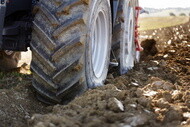
Tractor working in the field equipped with with Michelin
sculpture pneu MICHELIN AXIOBIB2
How can I reduce soil compaction and improve my crop yield?
What is soil compaction?
Soil compaction is one of the main processes that causes soil damage: it happens when increasingly heavy agricultural machinery travels over the soil, often in difficult weather conditions.
The very nature of the soil, its water content, crop types, and the load applied to the surface are all linked to compaction. Repeated passes by agricultural equipment create soil compaction and shear, thereby reducing capacity for aeration, infiltration, and crop root penetration.
The economic impact of soil compaction is significant: reduced crop yield and the risk of disease development. There’s also a need to do regeneration work such as plowing and/or de-compaction which eat up considerable fuel and time. All of this increases the risk of disease development.
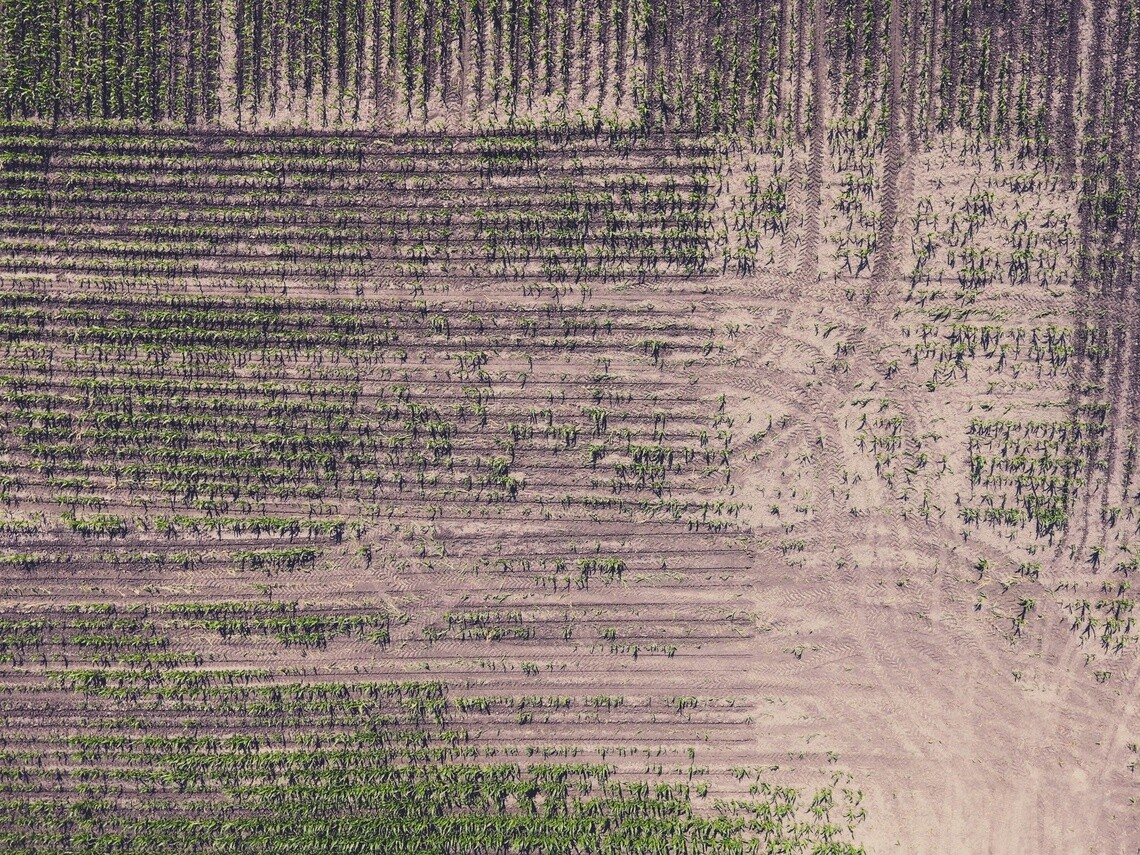
Aerial view of field with tire tracks
soil with tire tracks
But soil compaction is not the only phenomenon that can cause problems for your crops.
Rut formation
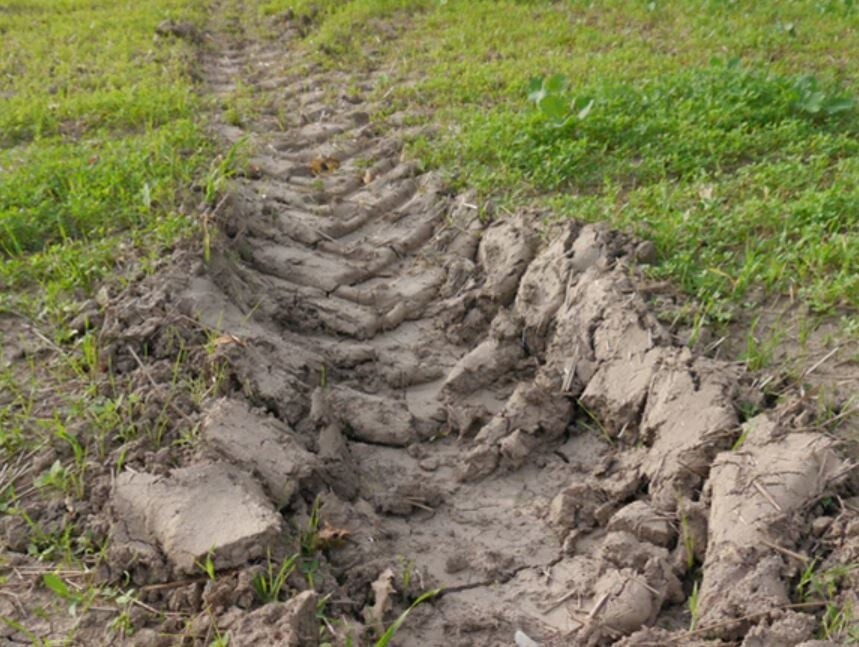
A rut is a longways indentation in the soil
picture of a rut in a field
Ruts are created when farm machines cause longways indentations in the soil by sinking down into it as they pass over it again and again. These ruts are a major issue, especially on muddy ground.
Rut formation has catastrophic consequences for crop growth: nothing grows in a rut, so it represents a net loss of yield.
Furthermore, ruts encourage water stagnation, which can asphyxiate plants and promote the development of disease.
Ruts also cause farm machinery to consume more energy. The depth of a rut is like a "step" that an agricultural tire must climb constantly. That means increased fuel consumption.
And the field damage caused by substantial rut formation will need to be repaired. This means carrying out soil regeneration work, which uses up time and fuel.
What can be done to reduce soil compaction and rut formation?
We recommend using ag tires capable of reducing ground pressure while carrying heavy loads. The pressure in the tire is close to the average pressure applied to the soil. (E.g. if the pressure in the tire is 1 bar (14.5 psi), the pressure applied to the soil by the tire will be around 1 lb/sq.in or 1 kg/cm2.)
So, the higher the tire pressure, the higher the pressure applied to the soil and the higher the degree of compaction and rut formation. Ag tires slipping makes soil compaction worse – therefore, it is essential for them to have good traction to avoid this.
Here are two solutions for reducing soil compaction and rut formation.
Solution #1: Opt for wide, "large volume" tires
The purpose of wide tractor tires is to reduce pressure at the same load and provide a better level of traction, while retaining the same external diameter and rolling circumference as a "standard" tire.
Even if a tractor was originally fitted with standard tires, it can be fitted with wide or large volume tires. The footprint is therefore larger and less deep, limiting soil compaction and rutting.

Wide or large volume tires reduce pressure and provide better traction
The chart below compares the pressure required for different tires to carry the same 10,000 lb (4500kg) load in the field. The wider your tire, the lower the pressure.*
This advantage is accentuated when the tire features Michelin UltraFlex technology.
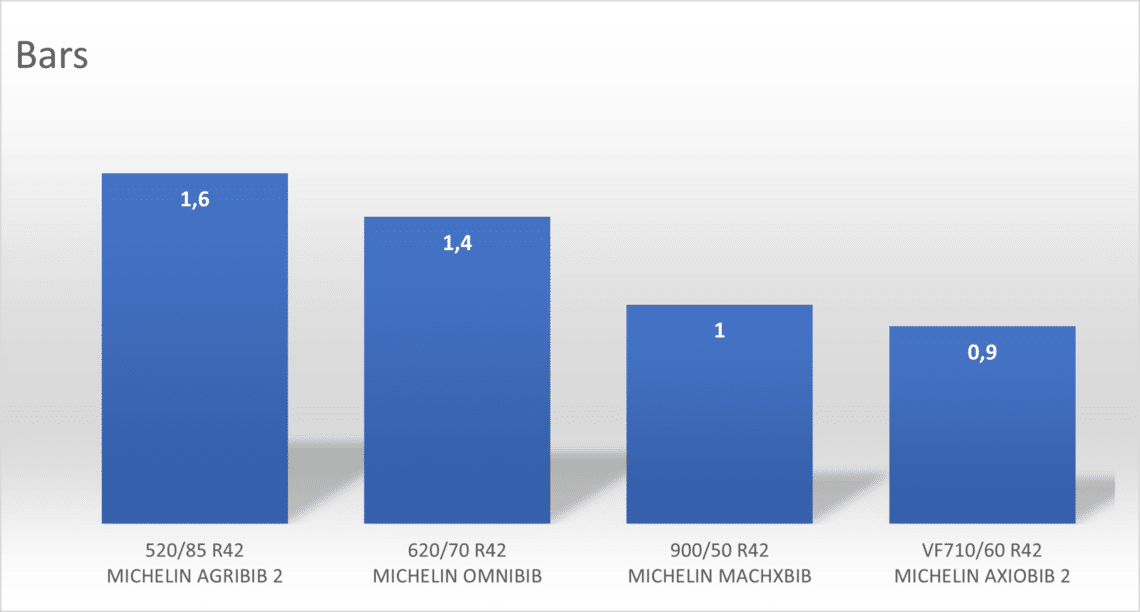
Tire pressure comparison chart in bar
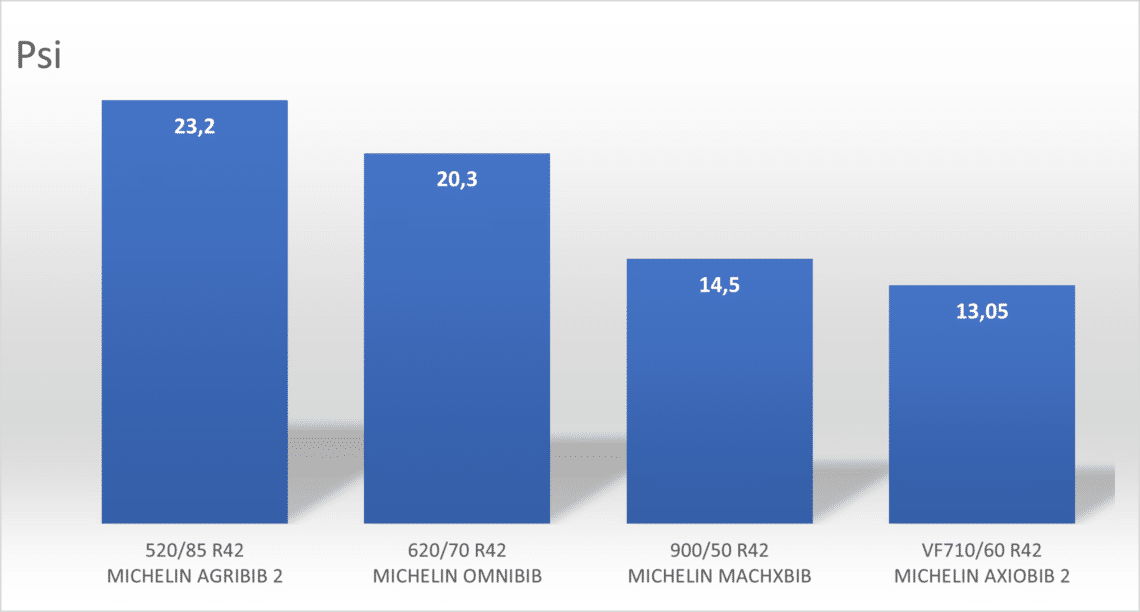
Tire pressure comparison chart in psi
Solution #2: Opt for Michelin UltraFlex Technologies
Michelin UltraFlex technology is based on an innovative, particularly tough casing, which enables more flex.
As a result, Michelin UltraFlex tires can carry heavy loads even at very low pressures, no matter the speed you work at.
Check out our low pressure simulation tool.
And that's not all: the flexible construction of the casing allows for a larger footprint, which in turn increases the tire's traction and limits soil compaction. With improved traction, Michelin UltraFlex technology tires also allow you to save fuel and to work faster, which improves your crop yields.
Studies carried out over several years by renowned universities* (in England, the USA and Brazil) have concluded that Michelin UltraFlex technology can increase agricultural yields from 2 to 6%.**
In short, with Michelin UltraFlex technology:
- you protect your soil
- you save time and fuel
- you increase your crop yields.
How does Michelin UltraFlex technology work? Watch the video to find out:
Conclusion
Whether you choose wider tires or tires with Michelin UltraFlex technology, you'll reduce soil compaction significantly.** But soil preservation is not the only benefit of optimized agricultural tires:
- Less soil compaction reduces the need to regenerate the ground and creates cost savings,
- Improved traction means less effort and energy from your machine, and therefore better fuel economy.
- Better traction helps you work faster, produce more, and have more time for family.
Find the right ag tires to reduce soil compaction
Need more advice? Discover our tire buying guide.
* Based on tire pressure tab recommandation of the Michelin databook 2022.
**A study carried out by Harper Adams University in the UK from 2013 to 2017, demonstrates that Michelin UltraFlex technology increases agronomic yields from 2 to 6%. These results are confirmed by similar studies carried out in the United States (Illinois) in 2015 and Brazil (Mato Grosso) from 2018 to 2021




